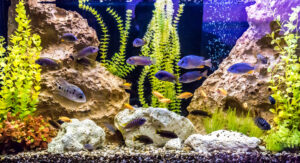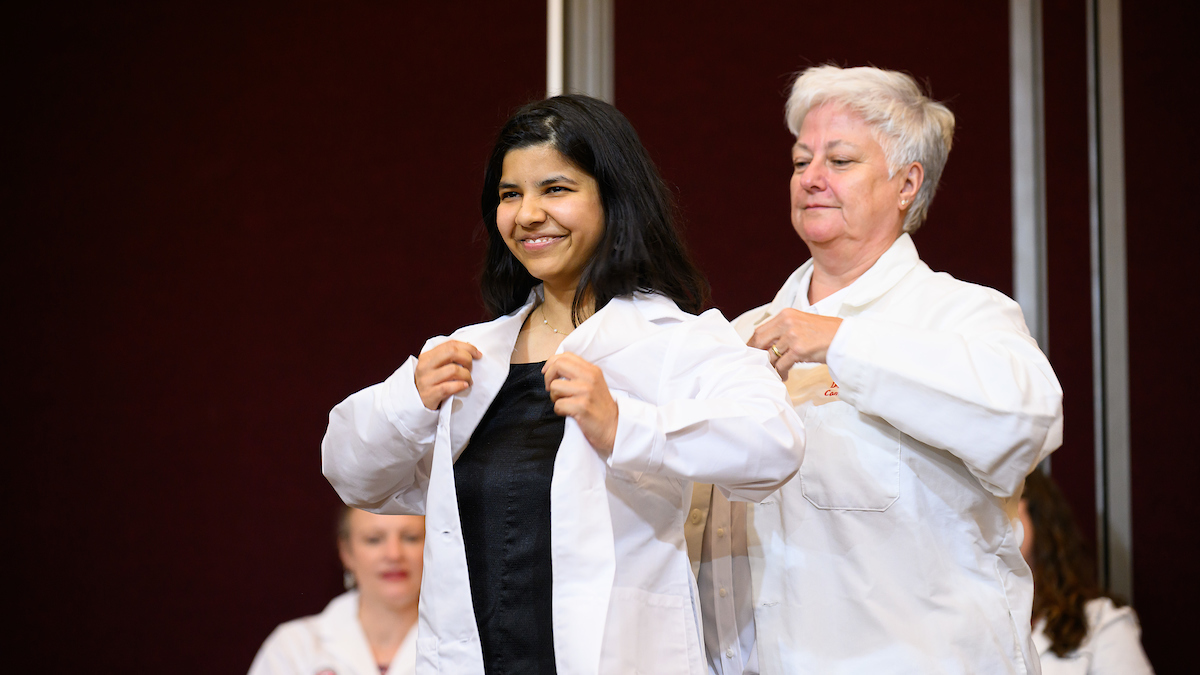NC State Veterinary Medicine Research Roundup, October 2020

A look at some of the latest published research from the NC State College of Veterinary Medicine.
Feline Heart Disease Treatment
The drug pimobendan is well tolerated in cats with cardiomyopathy and congestive heart failure regardless of the presence of outflow tract obstruction, according to new research authored by Bruce Keene, Teresa DeFrancesco and Sandra Tou.
Pimobendan treats heart conditions in companion animals and is frequently used in treatments for cats with congestive heart failure, though concern exists regarding its safety in cats with outflow tract obstruction of the heart.
The study reviewed 260 cats with congestive heart failure — 57 with outflow tract obstruction and 203 with nonobstructive disease and adverse effects related to pimobendan administration occurred in just 12 of the cats studied. The Journal of Veterinary Internal Medicine published the research.
Read the study here.
Canine Tumor Treatment
Research led by Tracy Gieger evaluates the response and outcome following radiation therapy of macroscopic canine plasma cell tumors.
The study looks at 40 dogs with plasma cell tumors with involved sites including skin, bones, nasal cavities and lymph nodes. Among the study’s findings: 95% of evaluable dogs had a complete or partial response to the treatment, indicating that radiation therapy is a useful approach in treating plasma cell tumors. Tumor responses are often complete and durable, with protracted survivals. James Elliott is among the study’s co-authors.
The research appears in Veterinary and Comparative Oncology.
Read the study here.

Mast Cell Maturation
A new study pinpointing effective ways to study mature tissue-derived mast cells finds potential in the long-term culture of human mast cells in dermal extracellular matrix-derived hydrogels (dECM-H) compared to collagen type I hydrogels (Collagen-H).
Mast cells are immune cells that play key roles in inflammation and undergo differentiation in the tissue environment where they can remain for many years. That characteristic results in tissue- and species-specific mast cell phenotypes, as well as significant variability in environmental stimuli response.
Researchers studied the effect of dECM-H on cellular metabolic activity cell viability and receptor expression and found upregulated IgE receptors associated with mast cell maturation when compared to collagen type I. The findings are an important step toward developing a research model that’s more representative of conditions in living organisms.
Glenn Cruse, Douglas Snider and Greer Arthur are among the authors of the study published in Tissue Engineering, Part A.
Read the study here.
Blindness in Tennessee Walking Horses
Using whole genome sequencing, researchers have identified a likely new genetic cause of congenital stationary night blindness (CSNB) in a Tennessee walking horse.
Previously, the only known genetic cause of CSNB in horses is a variant in the TRPM1 gene, but an affected Tennessee walking horse was recently found to have no copies of the variant.
Whole genome sequencing analysis identified a mutation in the GRM6 gene. The variant is believed to alter GRM6 binding, impairing vision in low light conditions.
The study’s co-authors include Brian Gilger, Annie Oh and Elizabeth Crabtree. The Equine Veterinary Journal published the research.
Read the study here.

Transporting Fish Safely
A new method for aquarium hobbyists to transport ornamental fish may help to reduce fish stressors and mortality rates associated with travel.
Researchers tested a new procedure using two different types of non-breakable plastic containers, freshly made salt water, a portable battery-powered aerator and bags containing 64 grams of sand from a display tank used to assist with chemical filtration. Animals were transported for 5 ½ hours.
Water chemistry and temperature remained stable for the duration and fish stress level was static compared to pre-transport assessment. All of the transported fish showed no signs of disease and displayed appropriate appetite and activity levels after transfer.
Aquarium hobbyists typically transport fish in sealed plastic bags inflated with oxygen and shipped the next day through mail or cargo on airlines. The build-up of ammonia and carbon dioxide limits the duration fish can be kept within these sealed bags to about 24 to 36 hours.
Tara Harrison, Greg Lewbart and alumnus Anthony Cerreta authored the study published in the Journal of Survey in Fisheries Sciences.
Read the study here.
Drug Concentrations in Pigs
Pigs given a single intramuscular dose of the drug meloxicam at 0.4 mg or flunixin at 2.2 mg are likely to have detectable levels of the drugs in urine up to two days and five days, respectively, after the first dose, information that will assist veterinarians in the therapeutic use of the drugs prior to livestock shows.
Urine clearance is important for animals in livestock shows where urine is routinely tested for the drugs. For the study, researchers including Ronald Baynes, James Yeatts, Patricia Routh and Emma Nixon determined the renal clearance of the two drugs in pigs and compared plasma and urine concentrations and tissue residues. The information will also inform livestock show authorities involved in testing for the substances.
BMC Veterinary Research published the research.
Read the study here.
~Jordan Bartel/NC State Veterinary Medicine


